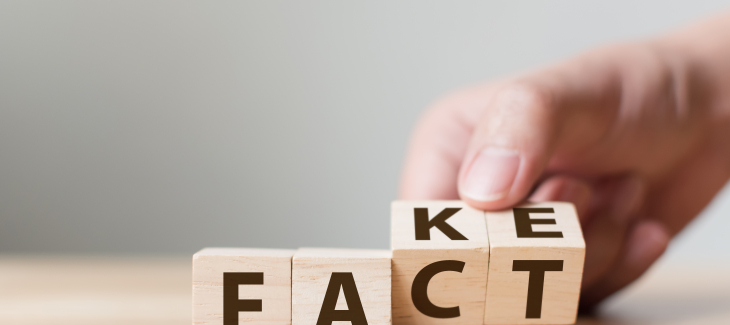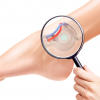- General
- Telehealth
- Career Trends
- Featured
- Legal
- News and Events
- Technology
- How To
- Procedures
- Training
- Allied Health Industry
- Allied Health Practitioners
- Employer News
- Candidate News
Recent Posts
Most Popular
COVID-19: 6 Myths Medical Professionals can debunk

The coronavirus pandemic continues to rapidly progress, impacting almost every aspect of our lives. Each day, scientists and researchers make new discoveries and do their best to share these updates with the public, but confusion and misunderstandings still abound.
Although the internet makes it much easier for all of us to stay informed, it also allows for the spread of myths, rumors, and misinformation. During the course of the last several weeks, we’ve seen the rise of false cures as well as bogus treatment recommendations like drinking bleach or eating large amounts of garlic.
While it would be nice to think no one would fall for these false statements, that unfortunately isn’t the case. As a medical professional, it’s your responsibility to keep your patients safe, healthy, and free from harm. During these uncertain and rapidly changing times, this may seem like a tough order, but it’s possible if you have good information.
If you want to slow the spread of fear and false information, one of the best things you can do is educate yourself. Doing so could mean the difference between unnecessary trips to the emergency room or even life and death. There are dozens of myths and rumors regarding the novel coronavirus and its potential treatments, but there are six that are especially hard to quash.
Myth #1: Scientists have developed a vaccine for COVID-19
Experts say we’re at least 12-18 months away from achieving a safe and workable vaccine. And that’s on the low end. Some researchers say it could take even longer. At least 62 efforts are currently underway, but that doesn’t mean all (or any) will be successful. Developing a vaccine is only the first step. Once approved, the vaccination will need to undergo months of clinical trials and review from regulatory bodies like the FDA and CDC. In the meantime, it’s important we all continue to practice good hygiene. This means washing your hands regularly, wearing a mask in public, practicing social distancing measures, and not touching your face.
Myth #2: The novel coronavirus was developed in a lab for military or terrorist purposes
Scientists aren’t entirely sure where the novel coronavirus came from, but the leading theory is that it jumped from an animal to human host in one of China’s outdoor wet markets. A wet market is a type of exchange where people sell produce, fresh meat, fish, and other perishable goods. Although more research needs to take place, scientists have determined that the virus isn’t a biological weapon and that it wasn’t manipulated in a lab. Scientists have mapped the genome of COVID-19 and discovered its very similar in makeup to the seven other coronaviruses known to infect humans.
Myth #3: Receiving mail and/or packages during the pandemic isn’t safe
Scientists aren’t entirely sure how long the novel coronavirus can last on surfaces, but depending on the material, it’s possible for the virus to survive for hours or even days. One study even found the coronavirus could live on cardboard for 24 hours. While these findings are unsettling, the Centers for Disease Control and Prevention (CDC) and the World Health Organization say there’s no evidence coronavirus is spreading through the mail.
If you’re concerned about exposure, leave any packages in your foyer or garage for at least 24 hours. You can also wipe down packages with bleach wipes or open your mail while wearing gloves. Be sure to dispose of them afterward.
Myth #4: Children aren’t at risk of catching COVID-19
Most of the current research suggests that elderly individuals and people with underlying health conditions like high blood pressure, respiratory illness, and diabetes are most at risk of developing serious, life-threatening complications with COVID-19. But that doesn’t mean children, infants, and young adults are immune. Even if the novel coronavirus doesn’t present symptoms, it’s possible to spread it to others just by going out. Additionally, there have been several reports in the last few weeks of infants and teenagers dying or experiencing serious side-effects. Everyone needs to take measures to protect themselves.
Myth #5: COVID-19 is just like the flu
This is by far one of the most persistent myths surrounding the novel coronavirus. Although COVID-19 does present similar symptoms to the flu, like a dry cough, body aches, and fever, it’s much more deadly and contagious. The mortality rate of the seasonal flu is usually about 0.01 percent. Researchers say the mortality rate of COVID-19 is between 1-3 percent, significantly higher. As testing and tracking measures become more widely available, that number may increase.
Myth #6: Home remedies can protect you against the novel coronavirus
There’s nothing wrong with taking vitamins and nutritional supplements or eating a healthy, balanced diet. In fact, these practices are recommended. However, there’s no evidence that they can protect you or your loved ones from COVID-19. The easiest way to lower your risk of catching the novel coronavirus is to wash your hands regularly, for at least 20 seconds each time; avoid public gatherings where lots of people are present; and adhere to social distancing guidelines.
If you’re working in the healthcare field, we encourage you to share this blog post with your clients and team members. You might even want to write a blog of your own or link to this page on your social media channels.
These are undoubtedly strange times, but it’s important your patients receive accurate information from a source they trust. Together, we can keep our communities safe and get through these challenging times.








Comments